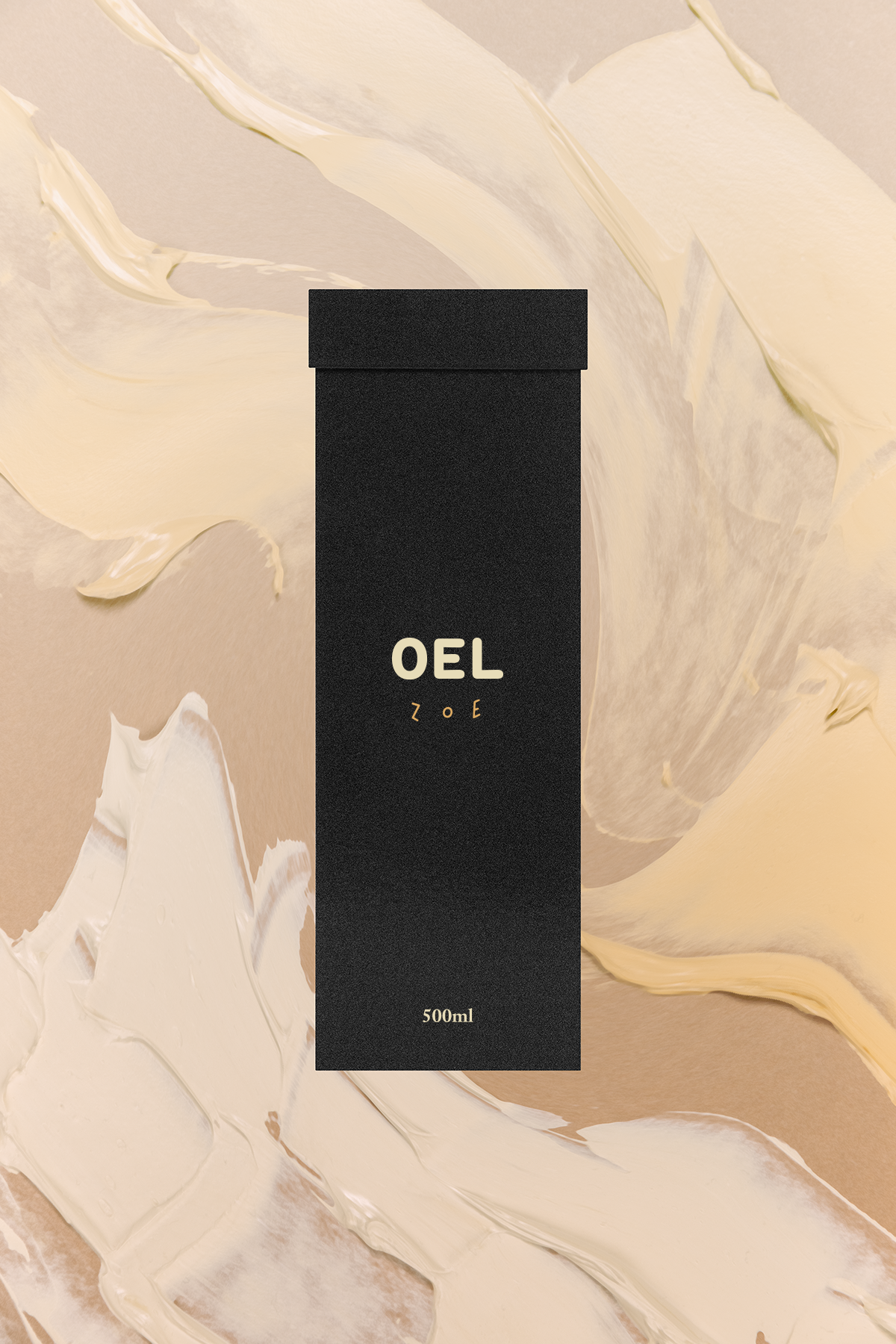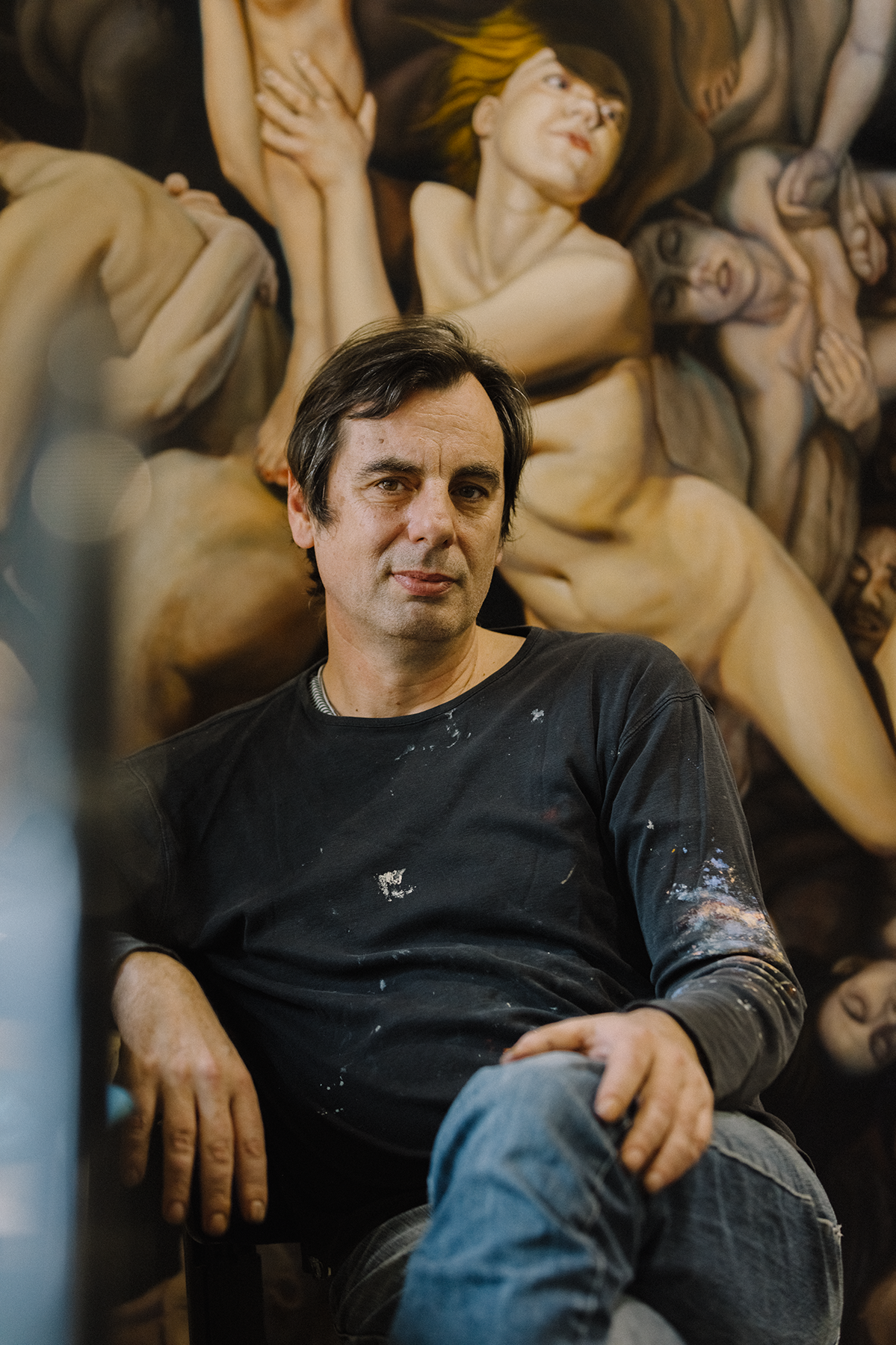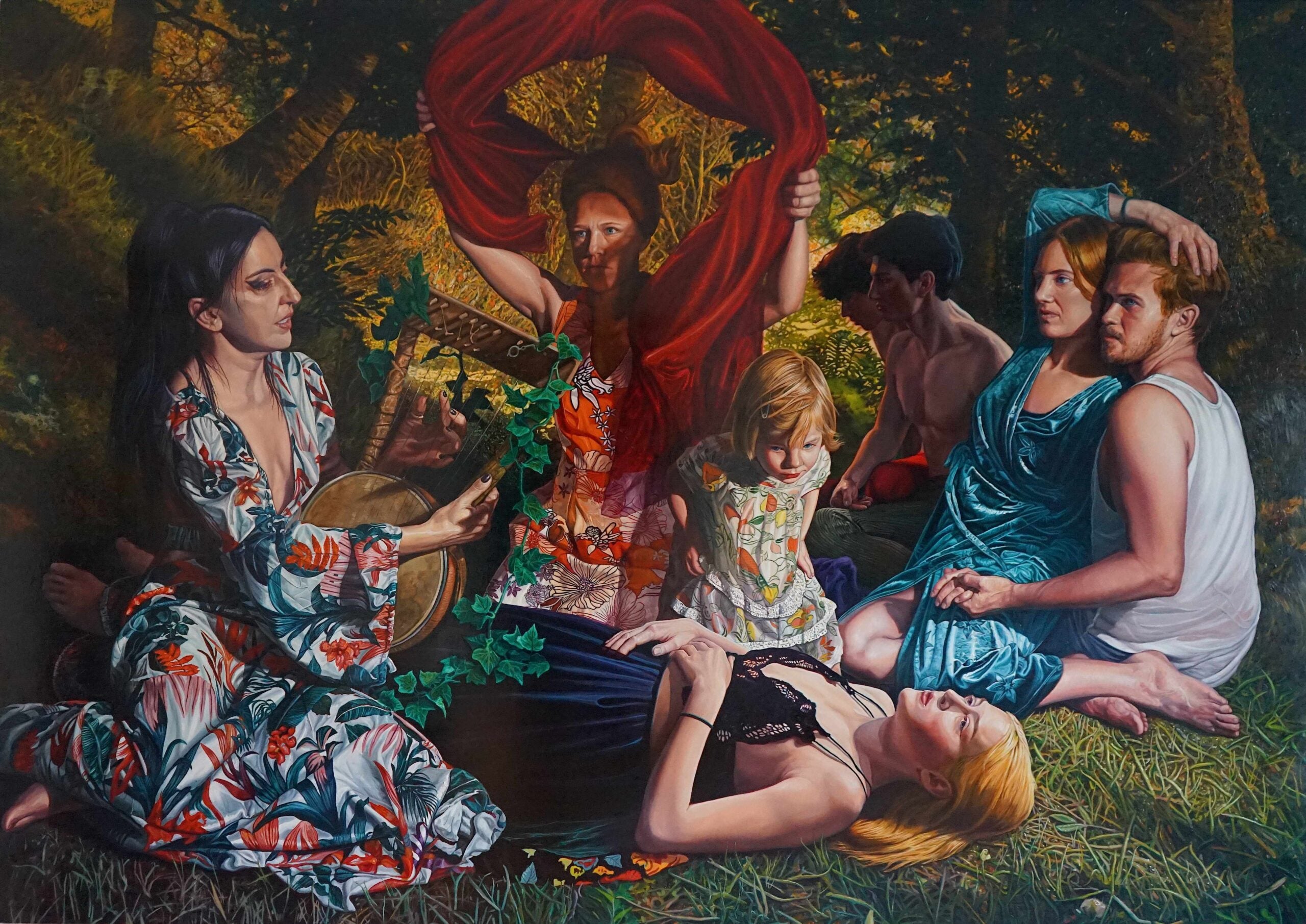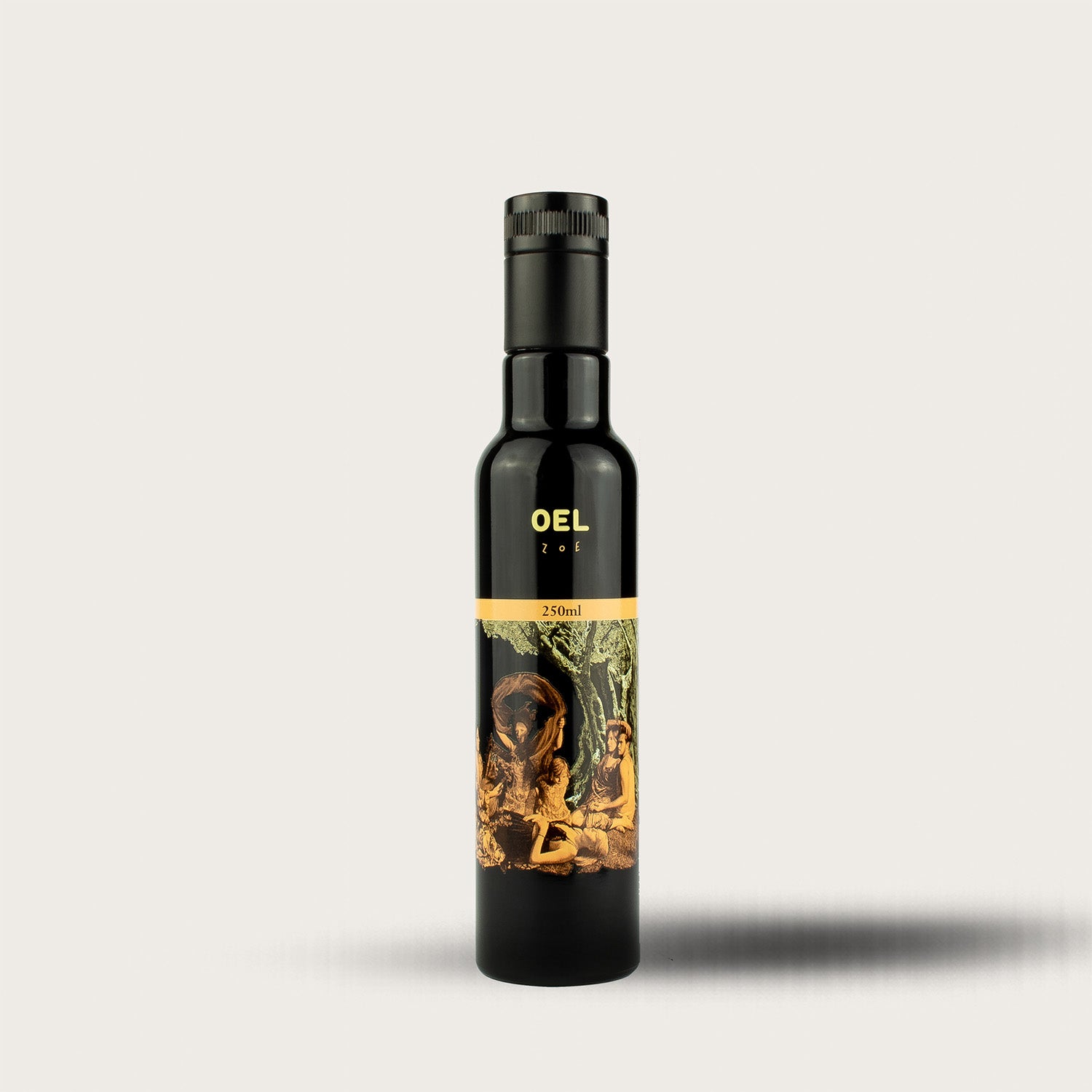

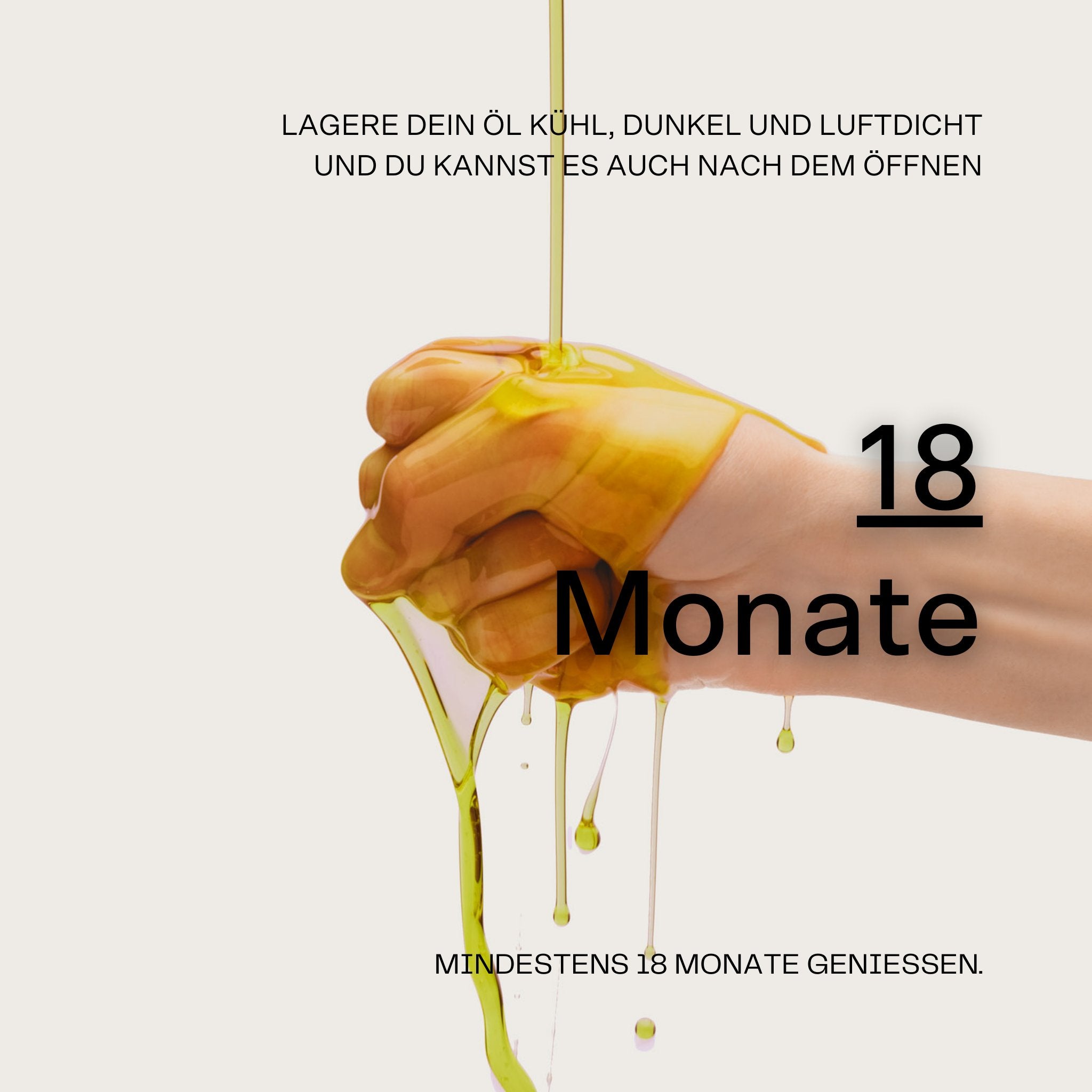
Art and early harvest olive oil - special!
Zoe – Premium Organic Extra Virgin Olive Oil from Early Harvest 250 ml
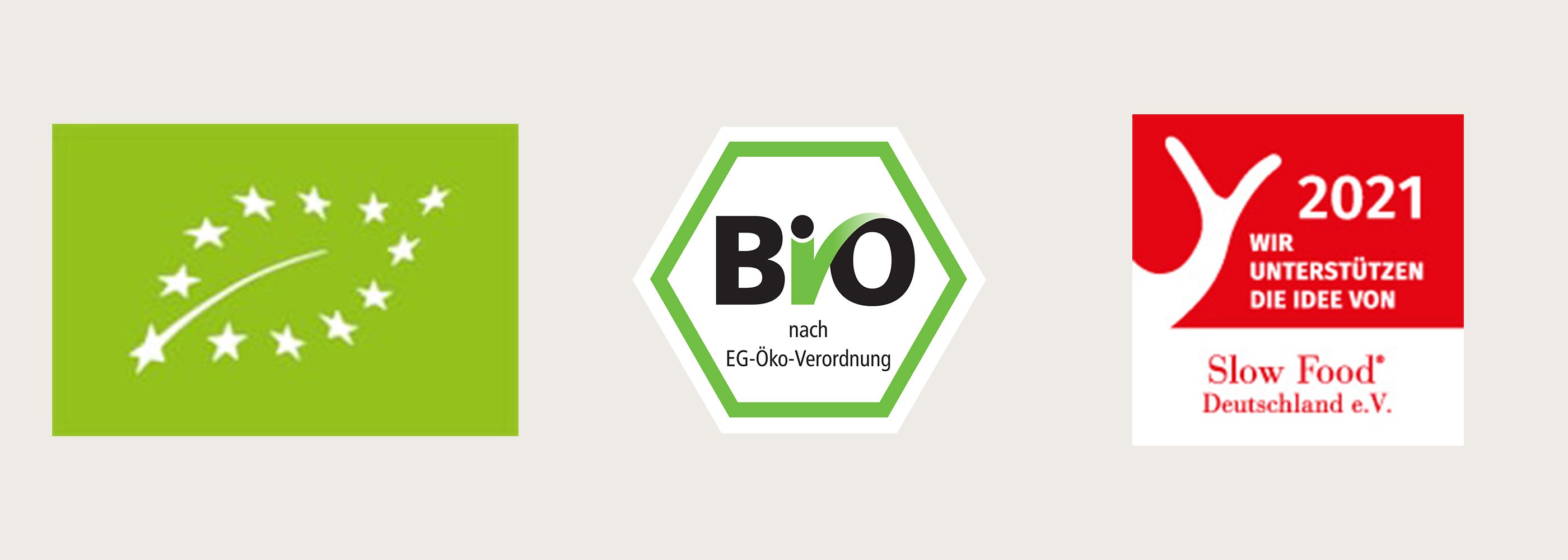
Tax included. Shipping calculated at checkout
 You will receive €1,05 Guthaben when you purchase this item.
You will receive €1,05 Guthaben when you purchase this item.
You will receive €1,05 Guthaben when you purchase this item.
➤ Harvest 11/2024
➤ Extra virgin olive oil from early harvest
➤ Organic farming
➤ Single variety: 100% Koroneiki olives
➤ Cold extracted (< 27° C)
➤ Acidity < 0.5%
➤ Intense taste of fresh grass, nuts and citrus fruits
➤ 1/4 liter in a bottle made of Miron violet glass (best light protection)
An excellent olive oil of the highest quality.
The Koroneiki olives for OEL ZOE come from Andania, some of whose groves are more than 500 years old. The olives are harvested very early – naturally, carefully by hand. This gives OEL ZOE a very intense aroma.
Immediately after harvest, the olives are cold extracted in Ilias' oil mill.
The painting on the gift wrapping is a work by Berlin artist Dimitris Tzamouranis, whose roots lie in Kalamata.

 You will receive €1,05 Guthaben when you purchase this item.
You will receive €1,05 Guthaben when you purchase this item.
You will receive €1,05 Guthaben when you purchase this item.
100%
Cold extracted - grade extra virgin
100%
Koroneiki olives from organic farming
100%
harvested gently by hand
The story of the Tzamouranis family
Who is Dimitris Tzamouranis?
Dimitris Tzamouranis was born in Kalamata in 1967. He initially studied painting and printmaking at the University of Fine Arts in Thessaloniki. From 1990 he continued his studies at the Berlin University of the Arts. Since then he has devoted himself to figurative painting.
Today he enjoys a considerable reputation and is represented by the Michael Haas Gallery in Berlin.
Dimitris Tzamouranis' painting Decameron now adorns the bottle and gift box from ZOE.
The story of ZOE begins with the Tzamouranis family in Kalamata in the Peloponnese. The joint work of father Dimitris Tzamouranis and son Amadeus Tzamouranis combines the knowledge and legacy of grandma Anthoula and grandfather Sotiris.
This olive oil is the quintessence of the Tzamouranis family.
Because ZOE combines the love of olive cultivation and good oil with the love of art.
frequently asked Questions
How does ZOE taste?
Since the olives for ZOE are harvested unripe, the oil tastes particularly intense and grassy.
The finish is racier than OEL. By the way, this is a quality feature of olive oil, caused by the polyphenols, antioxidant secondary plant substances.
Where does ZOE olive oil come from?
The Koroneiki olives for ZOE grow near Andania, a small village near Kalamata. Our state-of-the-art oil mill is also located here.
The region around Kalamata is considered the most important olive growing area in Greece. Olives have been cultivated here for thousands of years. In addition to the edible Kalamon (or Kalamata olive) used for oil production, the small green Koroneiki variety dominates here.
For good reason: The stony, hilly landscape, the hot summers and mild winters offer ideal conditions for the very aromatic, slightly bitter Koroneiki olives.
ZOE's trees have been defying these weather conditions for centuries.
What does “native extra” stand for?
Extra virgin olive oil is the highest quality category. Regarding its organoleptic properties, it has no defects; the taste is fruity. Its acidity must not exceed 0.8%.
The temperature of an extra virgin olive oil must not exceed 27 °C during production. This is important to protect the ingredients. Only under this condition can olive oil be called “cold-pressed” or “cold-extracted” and therefore “extra virgin”.
Other names: extra virgin, extra virgin
What is pure olive oil?
Single-variety means that only olives of one variety are used to produce oil - in our case the Koroneiki variety.
There are more than a thousand varieties of olives worldwide. And most olive oils on the market are blends, i.e. mixtures of oils from different types of olives, often unfortunately of different quality classes.
What does “Bird Safe” mean?
Our olives come exclusively from traditionally farmed areas
Groves in the Kalamata region that are harvested by hand during the day.
No bird or any other creature larger than a fingernail will be harmed here. We strictly reject industrial cultivation methods with fully automatic night-time harvesting, which can kill sleeping birds.
How does cold extraction work?
There are two methods to extract oil from the olive mash, i.e. to separate solid from liquid and oily from water: by pressing or by extraction using a centrifuge. This is where it is decided whether an olive oil is cold-pressed or cold-extracted during production.
The press presses the mash between mats and the centrifuge extracts the oil from the mash at several thousand revolutions per minute. The centrifuge is proven to be the gentlest method for processing olives after harvest. Our OEL is then immediately filled with UV and temperature insulation.
Why is the bottle made of Miron violet glass
To ensure the high quality
To best protect premium olive oil from ZOE, we chose a bottle made of Miron violet glass.
Violet glass shields the harmful rays of visible light
reliably. This means the valuable ingredients are retained for a long time.
In addition, Miron glass allows light of wavelengths between 380
and 420 nanometers (violet and UVA frequency) a penetration of
25%-45% and between 730 and 1050 nanometers (infrared frequency) one
Permeability of about 60%.
There are voices that say this is particularly beneficial for natural products.
Our purity guarantee
This is how we ensure the purity of our olive oil


